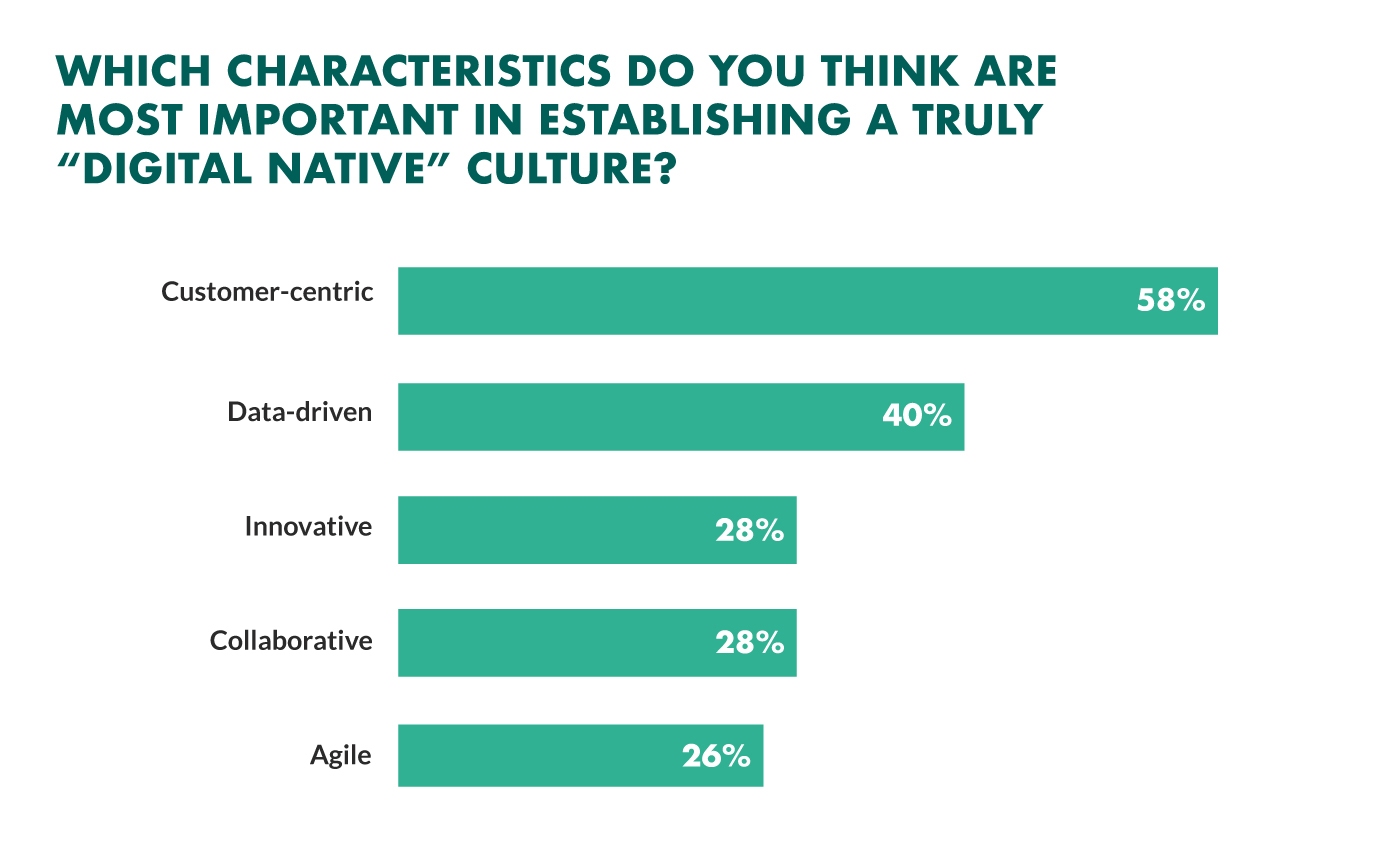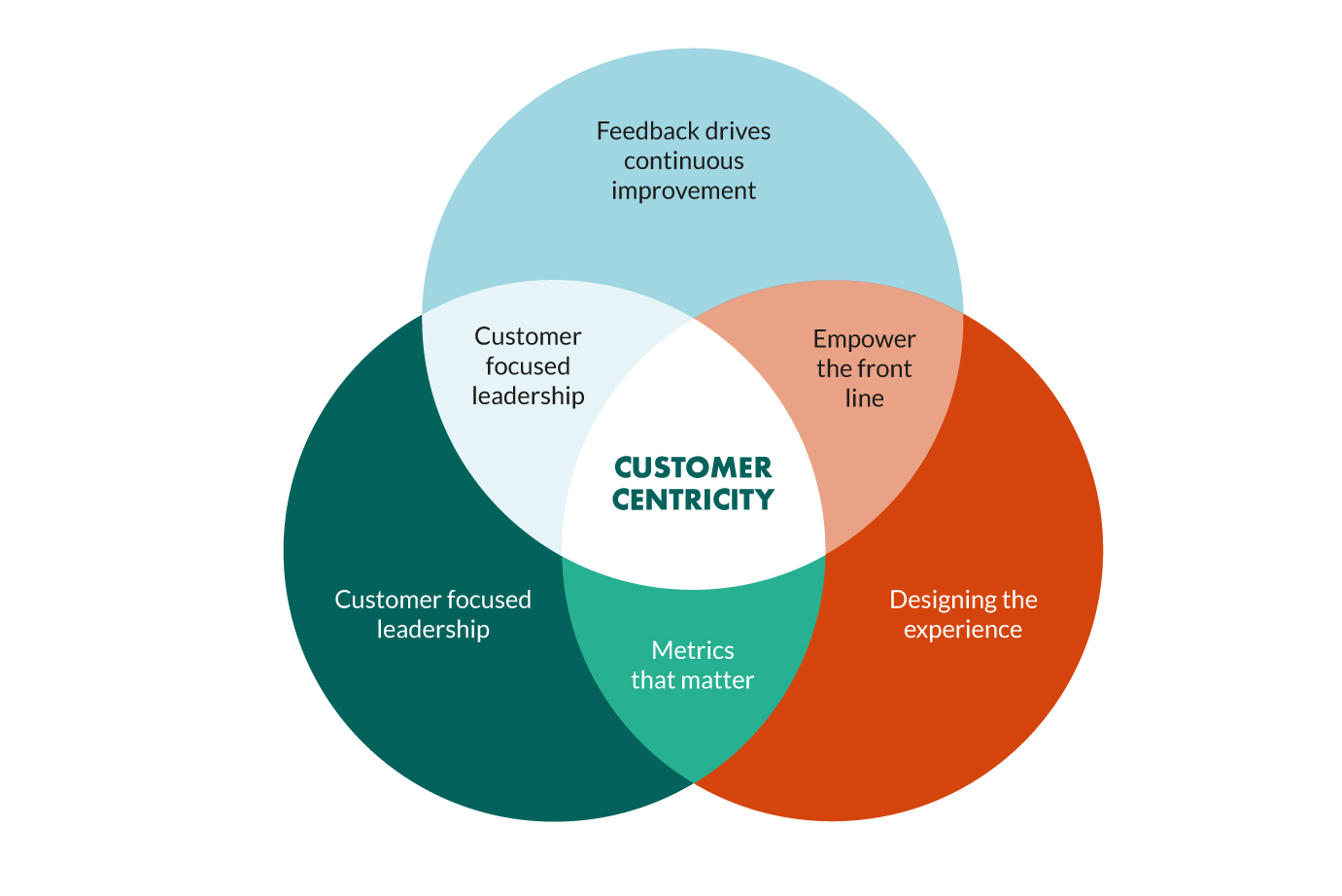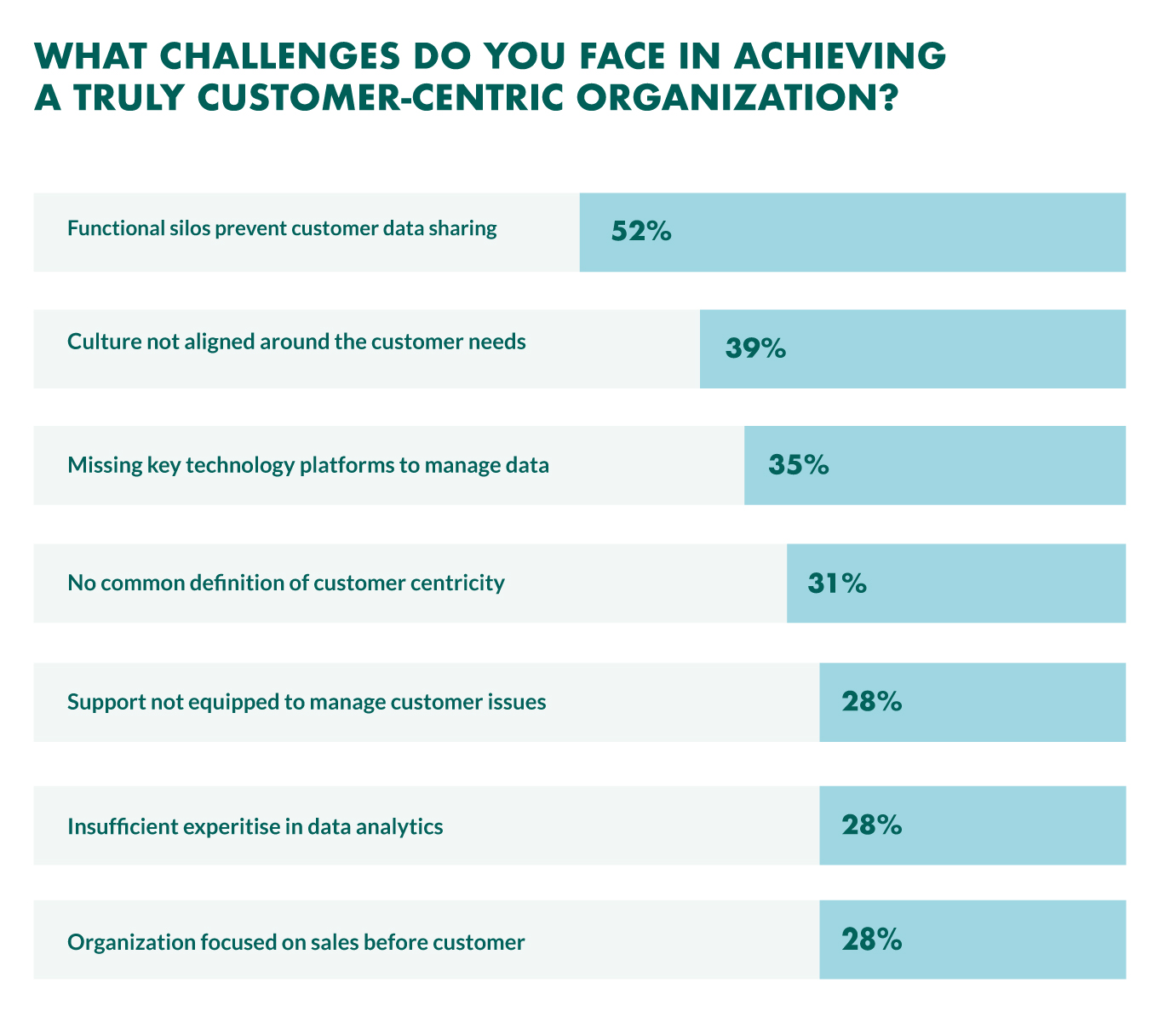A customer-centric way of doing business is a way that provides a positive customer experience before and after the sale in order to drive repeat business, enhance customer loyalty and grow profits.
But, a customer-centric company is more than a company that offers good service.
Both Amazon and Zappos are prime examples of brands that are customer-centric and have spent years creating a culture around the customer and their needs. Their commitment in delivering customer value is genuine. In fact, Zappos is happy to fire employees if they do not fit within their customer-centric culture!
But how important is being customer centric?
The good news is that’s becoming very important!
Econsultancy asked what the most important characteristic was in order to establish a truly “digital-native” culture.
The answer to that question and leading the responses with 58% was “to be customer-centric”.

Executing a successful customer-centric strategy doesn’t happen overnight. You need to start somewhere. And, in this case, it’s understanding the definition of customer centricity.
What does it mean to be customer-centric?
Customer centricity is not just about offering great customer service, it means offering a great experience from the awareness and consideration stages, through the purchasing process and finally through the post-purchase process. It’s a strategy that’s based on putting your customer first and at the core of your business.

When you put your customer at the core of your business, and combine it with Customer Relationship Management (CRM), you collect a wealth of data, which gives you a full 360 view of the customer. This can then be used to enhance the customer experience.
For example:
- You can use customer data to understand buying behaviors, interests and engagement
- You can identify opportunities to create products and services for your best customers
- You can use customer lifetime value to segment customers based on top spending customers
Not only does focusing on the customer makes sound business sense, but also the research by Deloitte and Touche found out that customer-centric companies were 60% more profitable compared to companies that were not focused on the customer.
“Client-centricity is the most important factor in a successful business digitalization, since client-centric companies are 60% more profitable compared to companies not focused on the customer.”
Deloitte, July 2017
The challenges of becoming a customer-centric organization
The power shift between brand and customer happened during the economic downturn. Customers became more selective in which brand they chose to spend their money with.
The winning brands were the ones who treated their customers with respect, offered great service, and built a relationship with them that still exists today.
During the recession, another game-changing thing took place – social media marketing and social selling exploded onto the scene and mobile became a major part of the customer journey. Customers are now able to compare products and services in real time and across multiple devices, which has presented a huge challenge for many brands.
Research has found that companies are struggling with this change and are unable to become customer-centric organizations – with the biggest challenge not being able to share customer information across departments.

Most companies do not have all of the components in place to claim they are customer-centric, but the most important part to remember is this:
You need to start with your customers, not your products and focus on what your customers want to do.
By designing your company from the customer’s perspective, your organization will be focused on the customers’ needs.
4 best practices to becoming a customer-centric company
By being customer-centric, you will want to anticipate your customers’ needs and delight them with products and services they may not have thought of, but will immediately fall in love with (i.e. Apple iPhone or iPad).
Thus, a customer-centric brand creates products, processes, policies, and a culture that is designed to support customers with a great experience as they are working towards their goals.
The four best practices of customer centricity are:
- Brands that are committed to customer centricity are passionate, and truly believe the customer comes first. They believe that without the customer, they cannot succeed in business (which is true) and want to see the world through the customer’s eyes. Marketers inside customer-centric organizations understand what customers want and use customer data to capture customer insights and share this across the organization.
- Brands that are committed to customer centricity focus on what the customer wants and needs and develop products and services around that.
- Brands that are committed to customer centricity focus on building relationships designed to maximize the customer’s product and service experience.
- Brands that are committed to customer centricity analyze, plan and implement a carefully formulated customer strategy that focuses on creating and keeping profitable and loyal customer.
How to measure the success of a customer-centric company?
Not every organization will have the same customer metrics to measure customer centricity. However, the two most important customer centric metrics that should be carefully monitored are churn rate and customer lifetime value.
Churn rate
Acquiring new customers is becoming more difficult. Therefore, more companies are investing in keeping existing customers instead of trying to find new ones. Here’s why:
- Acquiring new customers can cost up to 5x more than keeping existing customers.
- A 2% increase in customer retention has the same effect on profits as cutting costs by 10%.
- On average, companies lose approximately 10% of their customer base each year (also known as customer churn).
Companies with a high retention rate grow faster.
The key to success is to understand why people leave, and why people remain customers.
To calculate the churn rate, measure the number of customers who left in the last 12 months divided by the average number of total customers (during the same period).
Customer lifetime value (CLV)
For a customer-centric business, the most valuable “asset” is their customer base.
If you’re investing in long-term relationships, you can calculate the “health” of the relationship with customer lifetime value or CLV.
CLV measures the amount of revenue a customer contributes to your business for as long as they are a paying customer. It starts with their first purchase and ends when they stop doing business with you.
To calculate CLV, add up the total revenue you have earned and multiply that with the length of the business relationship. Then, deduct the initial cost of acquiring them.
For example, if a customer spends $1,000 annually, and the average “lifetime” of a customer is 10 years, you can multiply $1,000 by 10 years (equalling $10,000). Now, subtract the cost of acquisition (in this case, we’ll estimate $1,000), and the CLV is $9,000.
Calculating CLV helps you understand why it makes sense to invest in keeping your customers.
Conclusion
The shift towards becoming a truly customer-centric organization is both complex and long, but do not be put off by this as even the smallest changes to policy and processes can have a beneficial impact on both your employees and your customers.
Being a customer-centric organization is the Holy Grail towards unlocking the true potential of customer value. Always put yourself in the shoes of the customer – this will help you minimize customer effort and maximize customer value.
CRM software plays an important role in becoming customer-centric as this is where all of your customer data is stored. See how SuperOffice CRM can help your business by signing up for a free demo.
